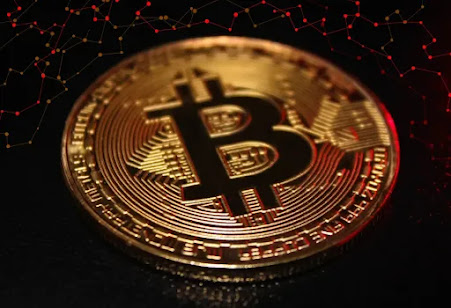What is a Bitcoin? Key phrases in cryptocurrencies and their definitions
MAY 8,2024
NR.BALOCH
With the price of Bitcoin hitting a record high in March, the contentious topic of cryptocurrencies is once again receiving attention.
Furthermore, although many people are aware of market-moving events like the "halving" of Bitcoin or the introduction of "spot ETFs," their significance is not always clear to those outside the industry.
Don't worry, though.
Here are some crucial words and their definitions in case you're new to them or just want a reminder.
Bitcoin
Although many may find it difficult to understand the nuances of cryptocurrency, almost everyone is aware of its most well-known product: Bitcoin. However, what is it in reality?
One kind of digital currency is a cryptocurrency, such as Bitcoin. In contrast to conventional currencies like the dollar or pound, Bitcoin is not governed by financial entities with a central authority. This makes it attractive among those who believe that financial freedom can be achieved through decentralization, but it also makes it quite volatile, with its value fluctuating based on the whims of buyers and sellers of Bitcoin.
Its price increased quickly in February and March 2024, briefly setting a new record high. However, the cryptocurrency's value can fall just as fast as it can rise; this is a pattern that has appeared repeatedly since the coin's introduction.
The "halving" of Bitcoin
The technology that powers Bitcoin, known as the blockchain, is maintained by compensating so-called "miners" with bitcoin for their work of validating transactions.
There isn't an endless supply of bitcoins, though, in contrast to certain other virtual currencies. There is a limit of 21 million that can be mined, the most of which are already in use.
Accordingly, the quantity of bitcoins awarded to participants who successfully validate transactions is divided in half about every four years, or when the size of the Bitcoin blockchain reaches a particular threshold. The most recent "halving" (also known as "halvening") of Bitcoin occurred on April 20, 2024, when the incentive for miners was lowered from 6.25 bitcoins to 3.125 bitcoins.
This guarantees that, theoretically, as demand for Bitcoin increases over time, its supply is stretched farther. However, since there are less incentives for miners, some may wonder if it makes sense financially for them to keep up the expensive maintenance of their potent machines.
Blockchain
All cryptocurrencies and several associated items, such as non-fungible tokens (NFTs), are based on blockchain technology. It is essentially a virtual spreadsheet that keeps track of every cryptocurrency purchase and sale. The name comes from the way they are arranged—in blocks that are connected in a massive chain.
A vast network of volunteers records each bitcoin transaction individually onto the blockchain, using computer programs to confirm the transaction's legitimacy.
The network of Bitcoin is encouraged to do this since the first individual to validate a transaction will receive a Bitcoin reward. In addition to being potentially profitable, mining is also controversial due to the enormous amount of energy required as individuals compete globally to update the blockchain first.
Cryptocurrency Trading
The online marketplace where investors can purchase, sell, and trade cryptocurrency is known as a crypto exchange. A cryptocurrency exchange functions as a brokerage, much like a traditional investment bank, where users may move fiat currency, such as dollars or pounds, from their bank into cryptocurrencies, such as Bitcoin or Ethereum. The majority of transactions come with costs.
Digital Currency Wallet
An investor's cryptocurrency is kept in a crypto wallet. It keeps the digital assets in a similar manner to how a conventional wallet keeps cash. A heated wallet and a cold wallet are the two varieties. Since hot wallets are online, they may be accessed more easily and quickly for transfers. Cold wallets are actual physical objects, similar to USBs with specific design, that are used to store cryptocurrency offline for longer-term and safer storage.
Ethereum
The term Ethereum refers to both the blockchain that powers it and the second-largest cryptocurrency after Bitcoin, which is symbolized by the Ether token. This facilitates a wide range of digital assets and applications, including non-fungible tokens.
It operates similarly to Bitcoin and other cryptocurrencies, but in 2022 it made the switch to a more environmentally friendly operating system that uses less computers and energy.
What are NFTs, and why do some have a million dollar value?
ETFs, or exchange-traded funds
With ETFs, investors may wager on a variety of assets without having to own any of them directly. Similar to shares, they are traded on stock exchanges and their value is determined by the real-time performance of the entire portfolio. They may consist of bullion in both gold and silver, or a blend of shares in insurance and technological firms.
Throughout the day, a spot Bitcoin ETF makes direct purchases of the cryptocurrency "on the spot" at the going rate. Although Bitcoin was already indirectly present in certain ETFs, the US approved multiple spot Bitcoin ETFs in January 2024. This made it possible for new investors to enter the speculative Bitcoin market without worrying about digital wallets or understanding cryptocurrency, including investment management companies like Fidelity and Blackrock.

